Supernovas are powerful and luminous stellar explosions. This event occurs during the last evolutionary stages of a massive star or when a white dwarf is triggered into a runaway nuclear fusion.
Key Facts & Summary
- When a star goes supernova, it – the progenitor – either becomes a neutron star or a black hole. There are also high chances that the star is completely destroyed.
- Some supernova explosions have a peak optical luminosity comparable to that of an entire galaxy. It then begins to fade – a process that may take several weeks or even months.
- Novae are far less luminous than supernovas as such they are also less energetic.
- The supernova word was first coined in 1931 by Walter Baade and Fritz Zwicky.
- One of the most recent and directly observed supernovae occurred in 1604. It was named Kepler’s Supernova, and it occurred in our Milky Way galaxy in the Ophiuchus constellation.
- Aside from Kepler’s Supernova, more remnants have been discovered of supernovas that occurred even more recently.
- Based on observations of supernovae in other galaxies, it is speculated that they occur in the Milky Way about three times every century – on average.
- The most recent naked-eye supernova was SN 1987A – it occurred after a blue supergiant star exploded in the Large Magellanic Cloud, a satellite galaxy of the Milky Way.
- Supernovae can expel several solar masses of material at speeds that reach certain percentages of the speed of light.
- When this happens, an expanding shock wave is driven into the surrounding interstellar medium. It sweeps up an expanding shell of gas and dust observed as a supernova remnant.
- Supernovae are major sources of elements in the interstellar medium.
- Interestingly, the expanding shock wave of a supernova can trigger the formation of new stars.
- Supernova remnants might be a source of cosmic rays and might produce gravitational waves – though this has been observed only in the mergers of black holes and neutron stars.
- Currently, theoretical studies suggest that most supernovae are triggered by one of two basic mechanisms: The sudden re-ignition of nuclear fusion in a degenerate star, or the sudden gravitational collapse of a massive star’s core.
The word “nova” is of Latin origin and it translates to “new.” This actually refers to what appears to be a temporary new bright star. The prefix “super-“ was added to distinguish supernovae from ordinary novae, which are far less luminous.

Generally, supernovae in other galaxies cannot be predicted with enough accuracy. Many amateur astronomers however, greatly contributed to the finding of supernovae through optical telescopes. Both professional and amateur astronomers hunt down these celestial events since they are very rare.
Causality
Currently, there are only two known factors that cause a star to go supernova. The first one happens when a star is at least five times more massive than our Sun. Massive stars usually burn huge amounts of nuclear fuel at their cores and produce a lot of energy and thus their center is very hot.
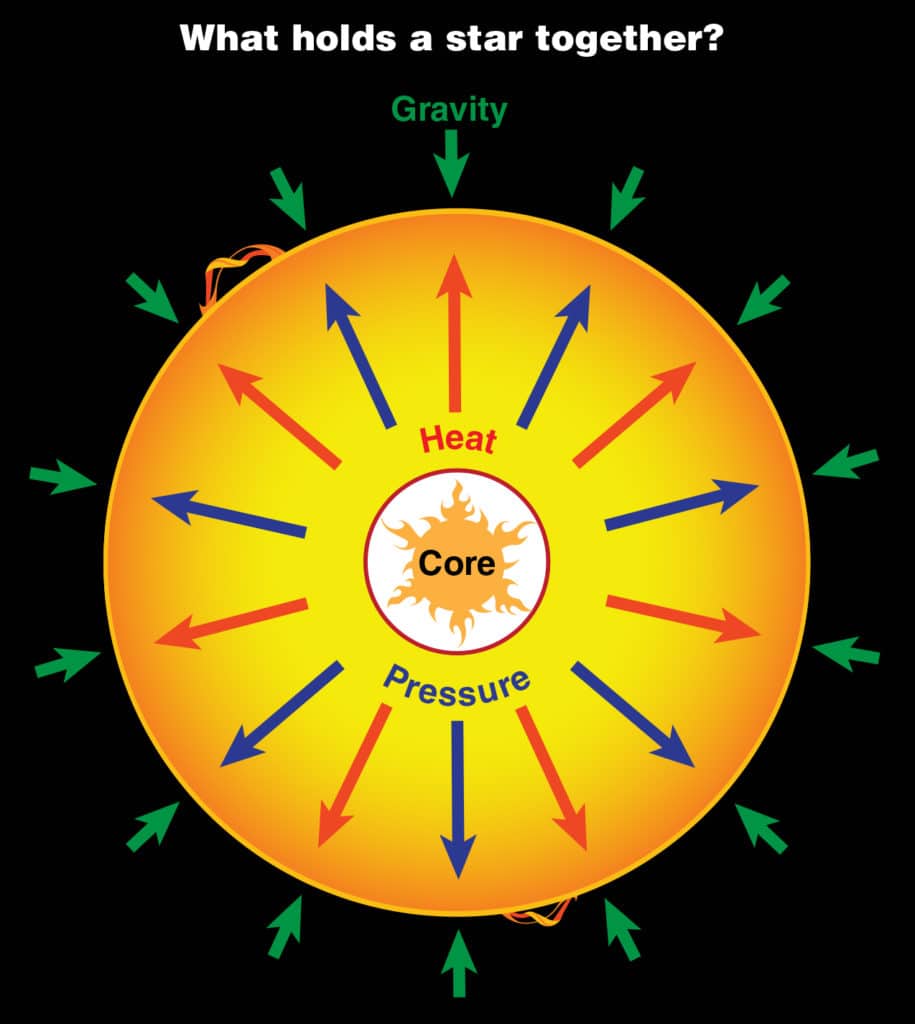
This heat generates pressure and it is because of this pressure a star’s nuclear burning keeps it from collapsing. Stars are balanced by two opposing forces. The gravity of the star is trying to squeeze it into the smallest, tightest ball possible while the nuclear fuel burning in the core creates a strong outward pressure. Thus, it resists the inward squeeze of gravity.
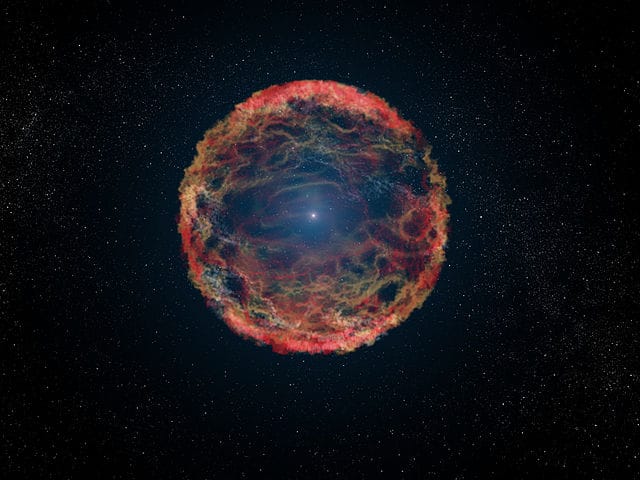
However, stars run out of fuel in time and cool off. As they cool off, pressure also decreases. Because of this, gravity is now able to do its thing and the star collapses. This collapse happens very quickly that it creates enormous shock waves that cause the outer part of the star to explode.
Often, a very dense core is left behind along with an expanding cloud of hot gas called a nebula. Some supernovas that occur within stars around 10 times the mass of our Sun may leave behind black holes – the densest objects in the universe.
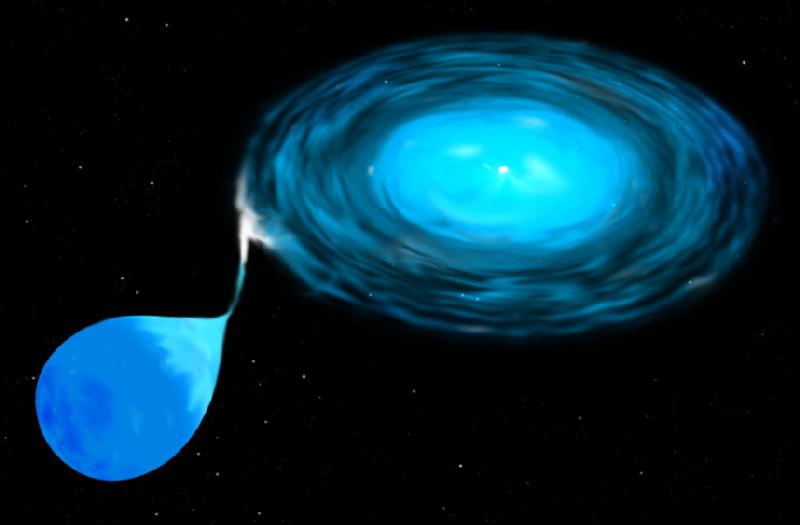
The second type of supernova can happen in systems where two stars orbit one another, a binary star. This happens when at least one of those stars is an Earth-sized white dwarf. A white dwarf is a star similar to our sun that ran out of fuel. If one such star collides with another or pulls too much matter from it, the white dwarf star can go supernova.
Classification
Usually, supernovas are classified based on their presence or absence of certain features in their optical spectra. They are divided into 4 main Types but they are also further subdivided.
In the beginning, the categorization conducted in 1941 of supernovas by Rudolph Monkoski, recognized only 2 different types of supernovas.
Type I – supernovas that didn’t show the presence of hydrogen in their spectra.
Type II – supernovas that showed hydrogen being present in their spectra.
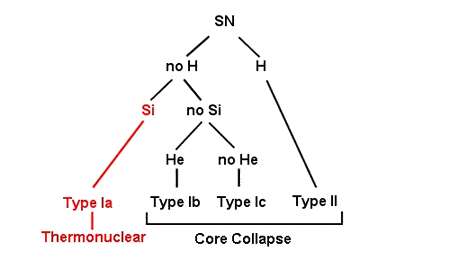
By the mid-1980s, as further studies were conducted Type I supernovas was further sub-divided based on the presence or absence of silicon and helium in their spectra.
Typa Ia supernovae contained an obvious silicon and hydrogen absorption in their spectra.
Type Ib does not have silicon in their spectra but shows the presence of helium in emission.
Type Ic didn’t display any silicon or hydrogen. Further studies concluded that type Ia supernovae can be found anywhere and in any type of galaxy in the universe.
However, type Ib and Ic supernovae occurred primarily in populations of massive stars, similar to Type IIs. Presently, Type II, Type Ib, and Type Ic supernovae are associated with the core collapse of massive stars.
Type Ia supernovae remained associated with thermonuclear explosions of white dwarfs.
Role in Stellar Evolution
Supernovas have played an important role in stellar evolution. Their remnants – clouds of materials – sweep up the surrounding interstellar medium. It slowly mixes with the interstellar medium for periods of thousands of years.
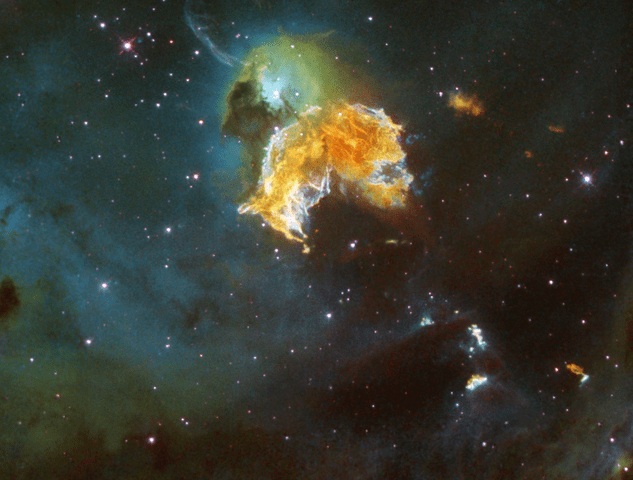
Because of this, they tend to enrich the medium with elements other than hydrogen and helium. These injected elements ultimately enrich the molecular clouds which are sites of star formation.
They are the dominant mechanism of heavy element distribution since heavier elements form in their progenitor during its period of nuclear fusion.
The Future – Milky Way Candidates
Many stars quite close to Earth are likely candidates of going supernova. Stars such as Antares or Betelgeuse are expected to go supernova at any moment and the recent behavior of Betelgeuse – it became very dim – suggests that it may indeed be the next star in our galaxy that goes supernova.
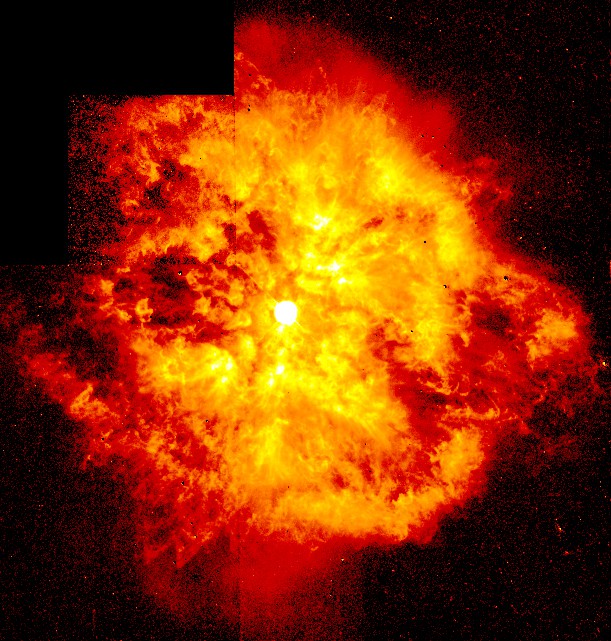
Both amateur and professional astronomers are constantly observing the sky in the hopes of catching the first phases of such an event. Though these stars are relatively close to us, it is unlikely that their explosion will have a major impact on us.
Did you know?
- There is only one in a lifetime chance to actually get a glimpse of a supernovae explosion.
- If we take a typical galaxy that has around 100 billion stars, there would be only a tiny fraction of them that would have the capacity to become a supernova.
- One of the earliest recorded supernovas, named HB9, may have been viewed and recorded by unknown Indian observers in 4500±1000 BC.
- The brightest ever recorded supernova, named SN 1054, occurred in 1006 AD. It was described by various observers from different cultures such as China, Japan, Iraq, Egypt, and Europe.
- The same SN 1054 supernova is responsible for the creation of the Crab Nebula – which is essentially a supernova remnant situated in the constellation of Taurus.
- The first extragalactic supernova observation was centered upon the SN 1885A supernova that occurred in the Andromeda Galaxy.
- With the advancement of technology, both professional and amateur astronomers are finding several hundreds of supernovae each year.
- The most luminous modern supernovae ever recorded is AASSN-15lh. It was detected in 2015 and peaked at a solar luminosity of around 570 billion. This is twice the bolometric luminosity of any other known supernova.
- In 2016, amateur astronomer Victor Buso was photographing the NGC 613 galaxy. He unintentionally observed a star in the first moments that it began to explode and immediately reported it to an astrophysics institution. This marked the first time anyone had ever captured the initial moments of the “shock breakout” from an optical supernova. The odds of capturing such an event were put between one in ten million, to one in a hundred million.
Sources:
Image source:
- https://upload.wikimedia.org/wikipedia/commons/thumb/0/00/Crab_Nebula.jpg/768px-Crab_Nebula.jpg
- https://spaceplace.nasa.gov/supernova/en/supernova2.en.jpg
- https://upload.wikimedia.org/wikipedia/commons/thumb/0/09/Artist%27s_impression_of_supernova_1993J.jpg/640px-Artist%27s_impression_of_supernova_1993J.jpg
- https://spaceplace.nasa.gov/supernova/en/supernova4.en.jpg
- http://astronomy.swin.edu.au/cms/cpg15x/albums/userpics/supernovaclassification1.gif
- https://upload.wikimedia.org/wikipedia/commons/thumb/7/76/STScl-2005-15.png/633px-STScl-2005-15.png
- https://upload.wikimedia.org/wikipedia/commons/b/be/Wolf_rayet2.jpg
